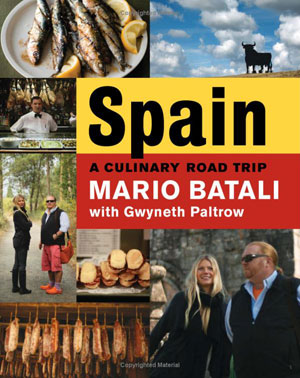It is about time I reported back here on the world of food,
or at least the state of my cookbooks.
Simply put, I have too many for the allotted shelf space I have, and
thus must figure out how to get another bookcase (for them alone, so the books
here that happen to be about things besides
food can get some much-needed shelf space as well). One day this will happen; in the meantime,
books are scattered here and there, but are still mostly on the shelves, and it
is to the shelves that I now go…
First – blue cheese pasta.
Is that all it is? Well, just
about, yes. This is a dish of a mere
three ingredients, so you’ve got to get them right – good blue cheese, good egg
pasta, good cream. This recipe is from
French Food at Home by Laura Calder and here is a recipe for two people:
Blue Cheese Pasta
250 g egg pasta (she suggests fettuccine, but I use
pappardelle)
125 g blue cheese (Roquefort, bleu de Causses, I use
standard Danish blue)
75 g cream, more if needed
First thing first:
get your salted water nice and boiling, and while it’s getting ready for
the pasta, the sauce is all ease itself.
Get a pan/pot (anything that will hold all the pasta you’re about to
cook easily) and put it on a lowish heat; melt the blue cheese slowly in it,
stirring and breaking it up, encouraging it to become a sauce. When it is all smooth and lovely, add the
cream and stir again, add a bit more cream until it looks like a proper pasta
sauce. Cook the pasta until it’s done
(egg pasta takes a bit more time than you’d think, but test it as always to
make sure it’s al dente) and then drain, then add
immediately to the blue cheese sauce and toss it around, making sure all the
pasta gets coated. Divide into warmed
bowls/plates and add as much pepper as you like – the blue cheese and egg
combination is a strong one, and can take a fair amount.
I made this and liked it very much, but I noted that Calder
says in France this is served before steak, and I thought, hm, this could use
some meat…and so there I was at M&S getting more of their house blue cheese
and it hit me- get some beef sausages and coax the meat out of the casings to
make meatballs! Cook the meatballs
separately from the cheese and then add to the pasta just before you add the
pepper, and wow, did that work. I hope
to make this pasta in the future alongside steak of some kind, which I sense is
its ultimate pairing. But the meatballs
worked out very very well.
What to serve afterward?
Hmmm…a little digression here…as usual when I go out and about I look
for cookbooks; and if you look long and hard enough, you can find some truly
good ones. One is Cook Simple by Diana
Henry, which I found last weekend at about the point when I had given up
finding anything altogether. (Earlier in
the day I’d found – and rejected – Locatelli’s Made In Italy, because even in paperback it was too
darn heavy. Also it has a blurb on the front cover from a non-chef, which
bugged me.) But Cook Simple rocks, and
she understands desserts and the need for simple ones; this one is so simple
she doesn’t have a name for it; so I am calling it
Brioche Bombe
Get a small brioche – the kind you’d have with breakfast, a
small one – and warm it through. Get
some good ice cream out and ready to scoop.
Take your brioche, slice it lengthways nearly all the way through –
leave it so it still has a hinge, so to speak.
Scoop as much ice cream into it as you can without making it impossible
to make into, effectively, an ice cream sandwich. Eat, being careful to catch any drips.
What kind of ice cream can be used here? Brioche is sweet and rich, so anything that
has nuts or chocolate is ideal, but then again so is vanilla – basically if you
think it would taste good with brioche, it’s bound to work. You could even cut the brioche before heating
it and get the insides toasted, for more of a contrast to the smooth ice
cream. It’s up to you. Good eats!





